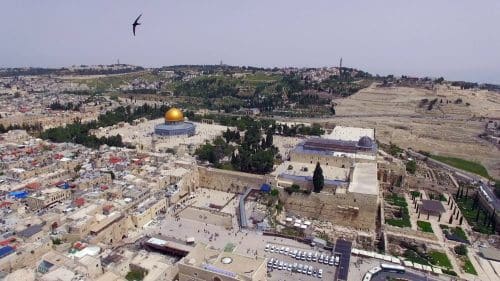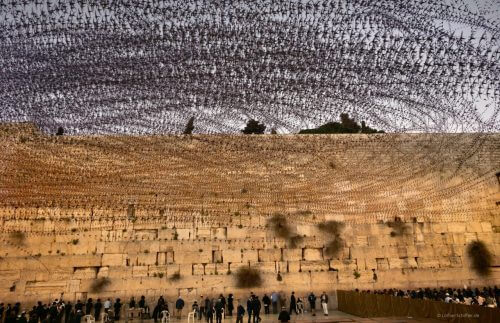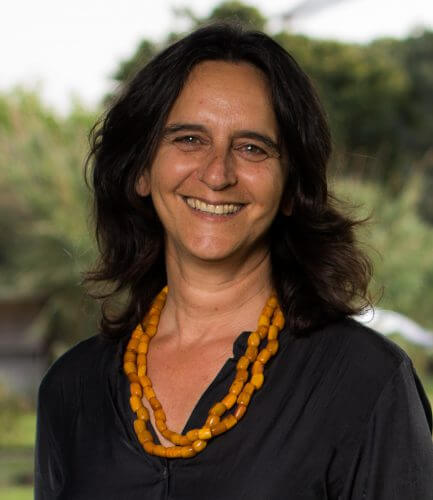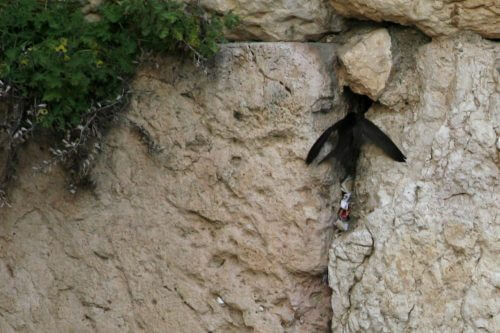This is among approximately 20,000 scientific articles published in the journal Scientific Reports * Editor of Scientific Reports: "This is an extraordinary achievement - your scientific work is of real value to the research community"

A study at Tel Aviv University led by Prof. Nega Kronfeld-Shore and Dr. Eran Amichai from the Department of Zoology at Tel Aviv University - which found that the brown tit birds nesting between the stones of the Western Wall are active 24/7 due to the strong lighting there - was included in the list of the top 100 studies in the category "number of downloads" From the internet - among 19,871 scientific articles published during 2019 in the prestigious scientific journal Scientific Reports (from the Nature group).
The article, published in July 2019, was downloaded 14,944 times during the year, and has since crossed the 15,000 mark. It is currently ranked 58th and rising. In the congratulatory letter sent to the researchers, the editor-in-chief wrote: "This is an extraordinary achievement (indicating that) your scientific work is of real value to the research community."
Prof. Kronfeld-Shor says that it all started when a student from the lab visited the Western Wall, and noticed that the lighting system had been replaced. The new system operates throughout the night at a very high intensity of 120 lux (unit for measuring light flux). Dr. Eran Amichai, also a researcher in the laboratory, approached the Rabbi of the Western Wall and received permission from him to study the effect of light on the wall beetles nesting there.

"The walleye is a small diurnal bird that comes to Israel in February every year to nest," explains Prof. Kronfeld-Shor, who studies the biological clock in various types of animals. "The sisim nest in crevices in walls and cliffs, and have even found a new habitat on high walls built by man. During the breeding season, they are usually active during the day, so they are engaged in hunting flying insects and feeding the chicks. At night they return to the nest, incubate the eggs or warm the chicks after hatching. In the Western Wall, which offers them many crevices for nesting, there is a large colony of sisims. In our research, we wanted to check whether the strong lighting throughout the night affects their activity routine."
During two weeks in the month of May 2019, Dr. Amichai recorded the typical sounds that the chickadees make when they are awake, at 4 different nesting sites: the Western Wall, Bar-Ilan University, Tel Aviv and a cliff in the Yehuda Desert. Lighting levels at night were also measured in these places: 120 lux at the Western Wall, 4 lux in Bar-Ilan, 1 lux in Tel Aviv and 0.005 lux in the desert. "We found that in the desert, in nature, the sisim woke up at sunrise and stopped their activity at sunset; "In Tel Aviv and Bar-Ilan they fell asleep a little after sunset, while at the Western Wall they were active throughout the night," say the researchers.
Another aspect of the study was testing the chicks' diet. "During the day, the chicks feed on day-active flying insects," says Prof. Kronfeld-Shor. "We wanted to find out if at night they also hunt night moths, which are attracted to the light and are usually hunted by insect bats. An examination of the dung of the roots in the Kotel revealed that they do contain moth scales."

According to the researchers, the findings indicate that light pollution has a decisive effect on the animals and habitats exposed to artificial light at night. "The effects can be negative as well as positive, and for the most part they cannot be anticipated in advance," says Prof. Kronfeld-Shor. "For example: there are places where the moths are important pollinators of certain plants, and harming them may harm the pollination as well; On the other hand, for the chicks, the moths are a source of quality food, which may allow them to thrive and even accelerate the growth of the chicks. However, chicks absent from the nest at night may not be incubating the eggs and not warming the chicks optimally, and this may also have consequences. In addition, the insect bats may be harmed by the new competition for their food, and there is also evidence that exposure to light at night causes cumulative damage and even diseases." Bottom line, the researchers believe, this study is just the beginning... it raises a wide range of intriguing issues and questions, which require further research, and this may be why it has attracted the attention of so many scientists around the world.

"We think that the article has aroused so much interest because it deals with a major environmental issue, which has been studied a lot in recent years: the effect of light pollution on animals," concludes Prof. Kronfeld-Shor. "The case that we investigated, the effect of the strong lighting in the Western Wall on the cisterns nesting between the stones of the Western Wall, demonstrates an extreme case where a strong light prevails in the place during all hours of the night. That is why it produced unequivocal findings that are difficult to achieve in most studies in the field."

6 תגובות
To cynical: wretched soul
A lot of interest in the article is the Hesis party at the Western Wall
Unpleasant, but this is all a result of public relations.
The newspaper is considered the lowest among Neitzer newspapers with an impact factor of 5 or less...
Beyond that, blackmail
Hello, does the sis also nest on lampshades at the entrance to the house? Or is it a swallow? This is the second year that they are trying to build a nest that looks like a combination of mud made by rock and creates a kind of balls that stick to the lampshade at the entrance to the house. When you open the door they run away and roam around the house and their wingspan is strong and they fly quickly.
There is no such thing as Sisi the Kotel. The name is Sis the Walls
An amazing thing to learn from this topic is the fact that even man-made light directly and indirectly harms biodiversity.
I would not be surprised if zoologists who study North Korea discover a healthier variety due to the "turning off of the lights" that takes place there during the night.